Cara Klothe, a Grand Prix dressage rider and breeder in Lehigh Valley, Pennsylvania, was diligent in ensuring her mare’s pregnancy went to plan, from scheduling regular ultrasounds to sending her to a foaling barn for delivery. Her mare Lhegally Blonde (Licotus—Qhuiver, Quaterback) isn’t just her competition horse, she’s a beloved friend Klothe has raised and trained from a foal.
So when Kothe got a 3:30 a.m. phone call on June 14 that “Blondie” had foaled not one, but two babies, she thought she was dreaming.
“I went back to my messages and my phone calls like six times when I woke up,” Klothe said. “I was like, ‘I don’t think this is real life.’ ”
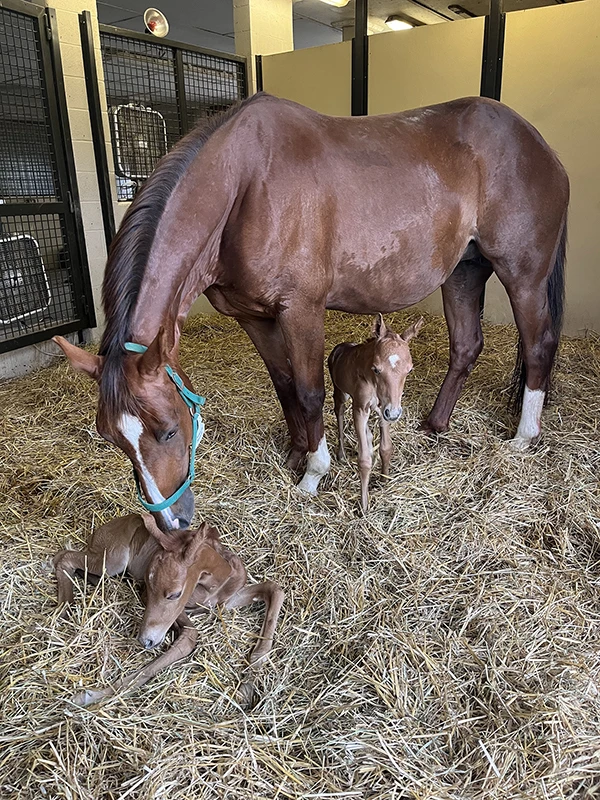
Klothe couldn’t believe that, after months of normal checkups, she had both a filly and a colt waiting to meet her. She also immediately worried for her mare, who ended up being healthy through the delivery.
“This was her first—well, it was supposed to be her first—foal,” Klothe corrected herself.
Because Klothe was busy buying a farm as the mare approached her due date, she took the extra step of sending her to Select Breeders Services in Maryland to foal out. She looks back with relief that the mare was in expert hands when she delivered her surprise twins.
“They were pretty shocked that both of them were alive and doing well, because it’s a pretty dangerous situation not only for the foals but for the mare,” Klothe said. “Oftentimes you lose one or multiple during the delivery.”
The foals, named Elle and Emmett to continue their dam’s homage to the movie “Legally Blonde,” were then sent to the NICU at the University of Pennsylvania’s New Bolton Center in Kennett Square. There, they received round-the-clock care for their first 10 days.
ADVERTISEMENT
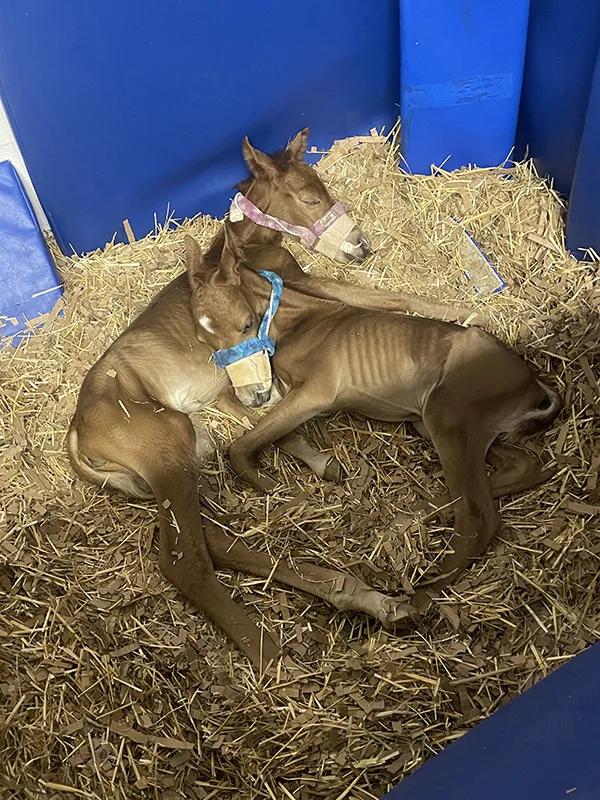
Twin births in horses are typically risky, and each foal has faced some complications in their first few weeks of life. While a typical warmblood foal is about 75 pounds at birth, Emmett and Elle were undersized, at 30 and 40 pounds, respectively. Elle was also a “dummy foal.”
“She didn’t have a great suck reflex, she didn’t really want to get up, she didn’t really want to nurse,” Klothe said. “They could get her up to her feet, and she would kind of mill around.”
After a couple of days of specialized care and “a lot of groceries,” Elle’s instincts kicked in. She brightened up, started nursing and began acting more like a typical baby. Now, Kothe describes her as especially smart and observant.
Emmett, unlike Elle, was almost immediately eager to nurse. His most urgent problem was different from his sister’s.
“The colt was game to do everything, but he was so small that he couldn’t reach the udder to nurse,” Klothe said. “So he was game to nurse, he wanted to nurse, he had great suck reflex—but he just couldn’t even reach.”
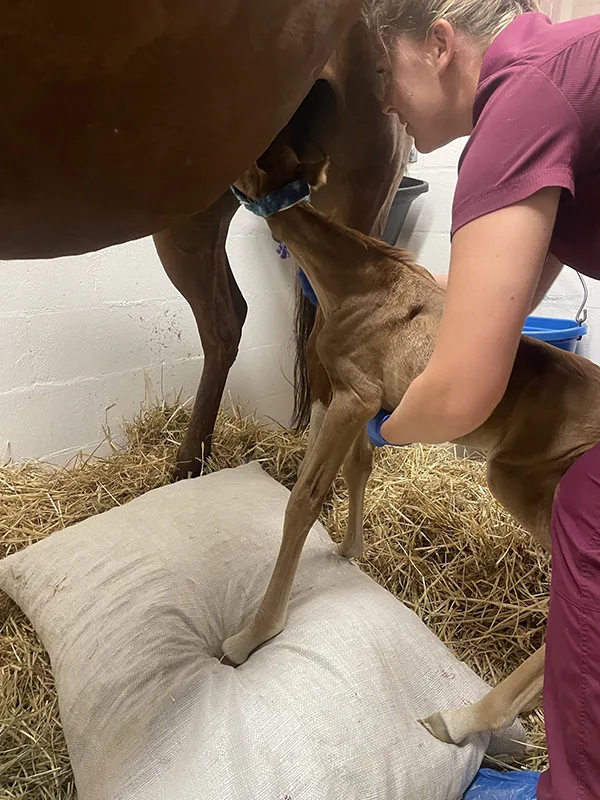
Veterinary staff milked the mare and ensured that both babies got tubes with colostrum within the first few hours of their birth. Because they wanted to encourage Emmett’s strong instinct to nurse, they also used a stand that propped the tiny colt up to his mother’s udder.
The babies, who arrived a few weeks early, have some catching up to do in terms of bone growth. Their movement is restricted as their hocks and knees develop. Emmett has even been fitted with splints to straighten out his legs, which are slightly bent from his scrunched position while sharing the womb.
An unintended benefit of all these special interventions is that the babies are very socialized and easygoing about being handled.
“They’re both hilarious,” Klothe said. “The colt is a total ham, which is good because he’s the troublemaker. He’s really personable. If you go into the stall he runs over to you and follows you around like a dog.”
ADVERTISEMENT
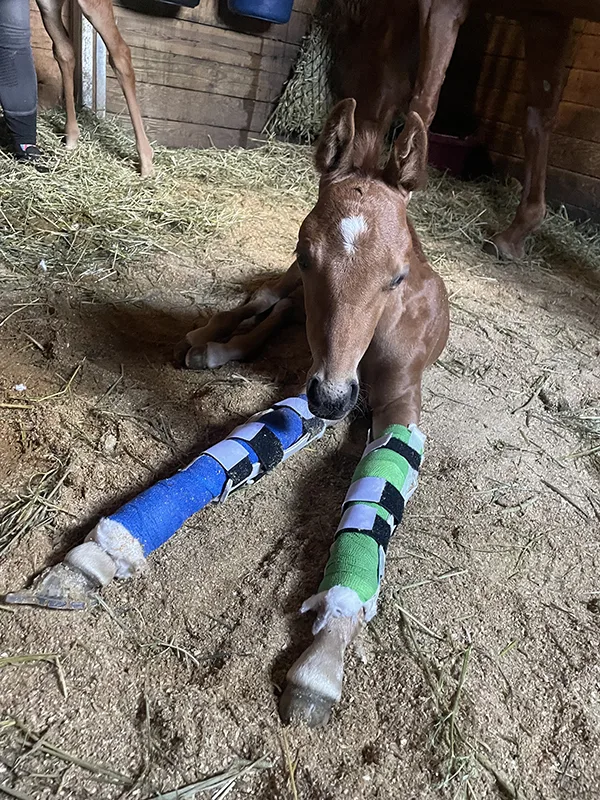
Klothe is starting to notice ways in which the two are coming into their own distinct personalities.
“The filly is a little bit more reserved,” she said. “She’s very sweet. She’s really, really intelligent—really wants to go over and see what’s going on—but isn’t quite as in-your-face as the colt is.”
Already, Klothe sees her dam’s traits mirrored in Elle, from their observant natures to their typey faces. She also believes that the sire, an Oldenburg stallion named Shavane (Shakespeare RSF—EM Rheporter, Royal Prince) who Klothe also owns, has passed along some of his boldness to the colt.
“He’s just out to cause trouble, just like his father,” she said. “He’s a very sweet guy, but he’s cheeky. He’s always looking to sneak one on you.”
Klothe’s original plan was to sell Blondie’s foal, but that changed with the bombshell of the twins’ birth and the emotional experience of caring for the foals in their first uncertain days.
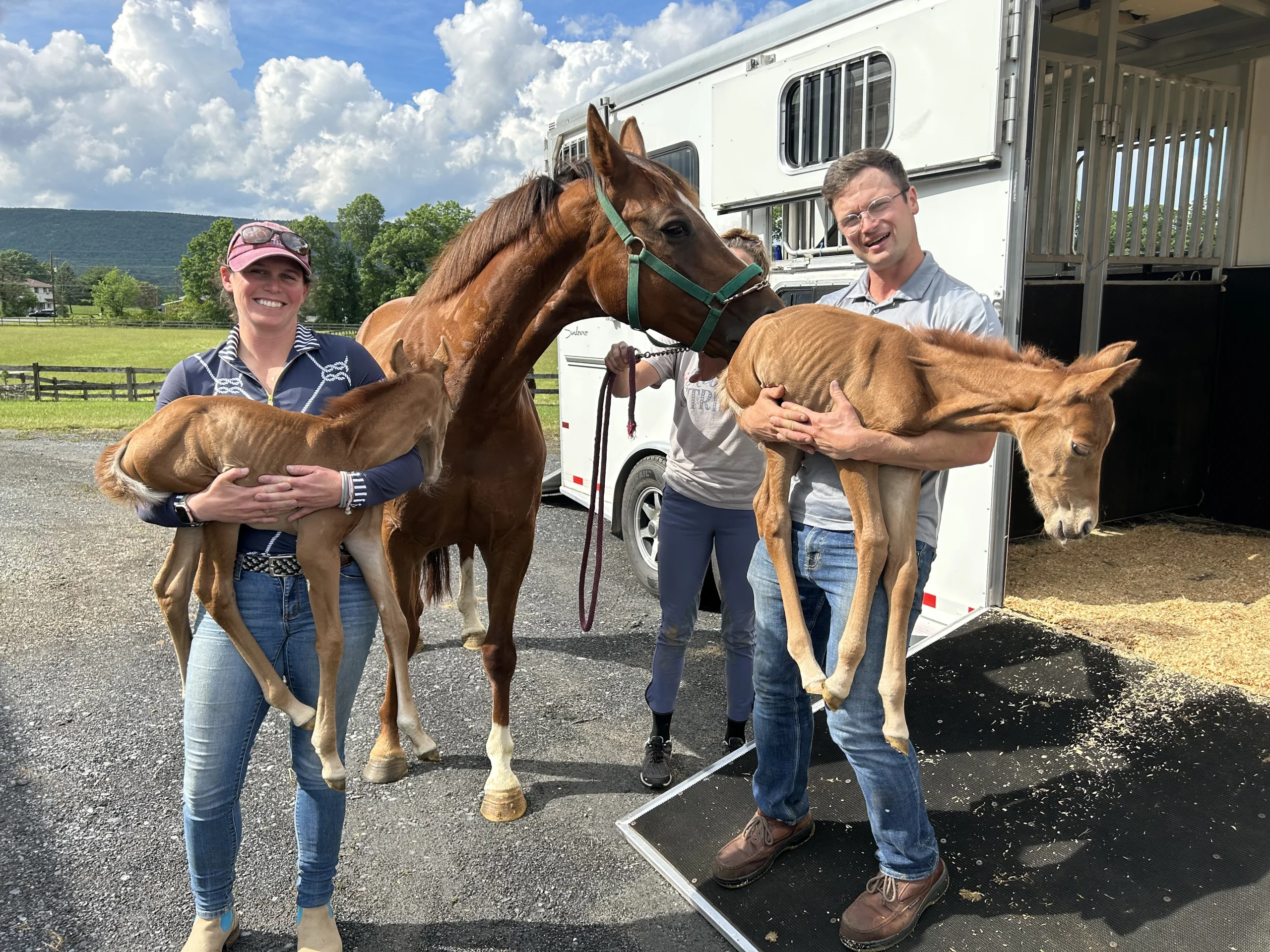
“I honestly have to say that probably is not going to happen,” she said. “They’re probably going to end up being my pets after all of this.”
While Blondie surprised her owner and vets with a second foal, Klothe admits that she isn’t shocked that this particular mare overcame the odds to successfully deliver twins.
“She’s always been an overachiever her entire life,” Klothe said.












